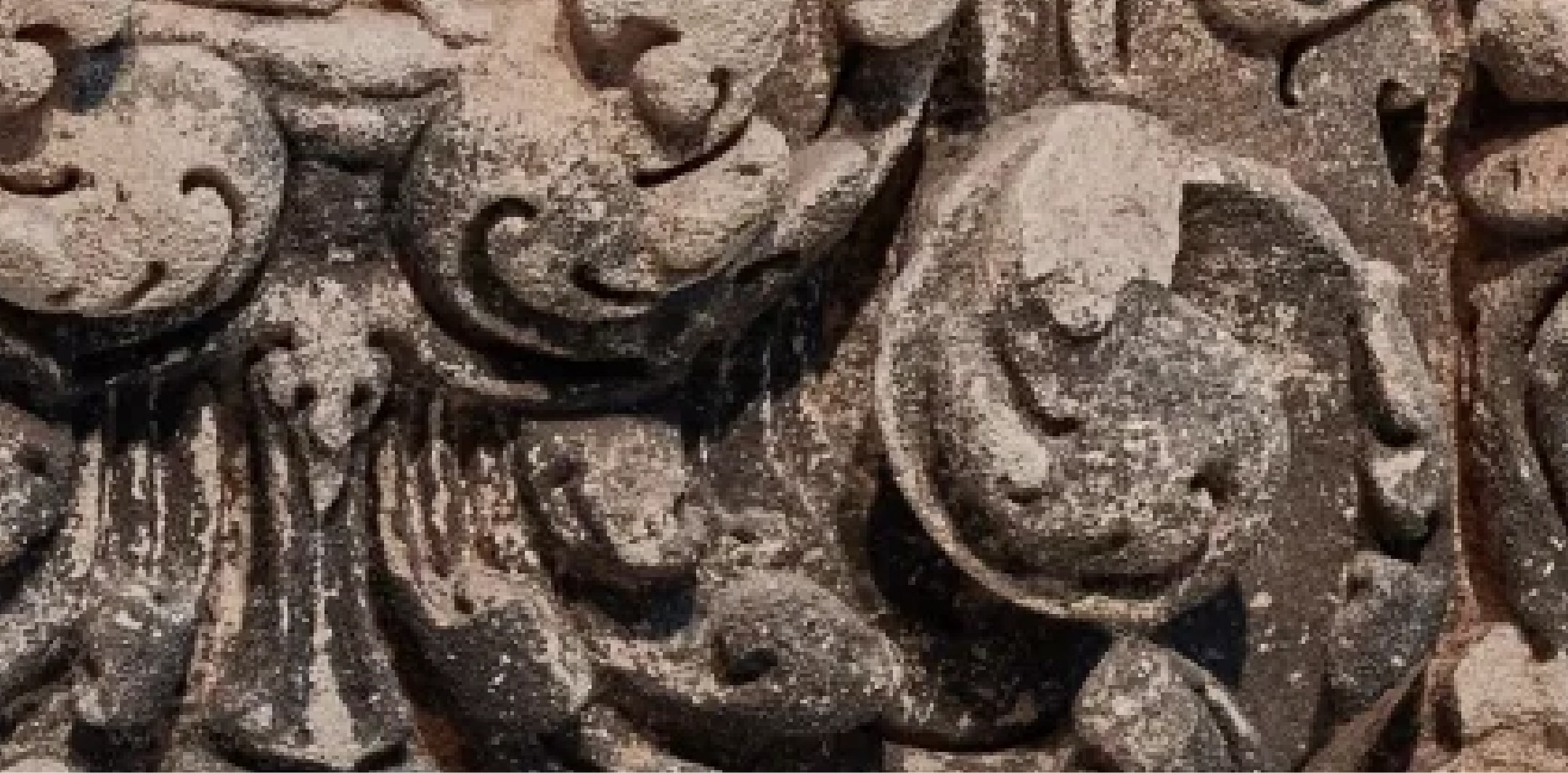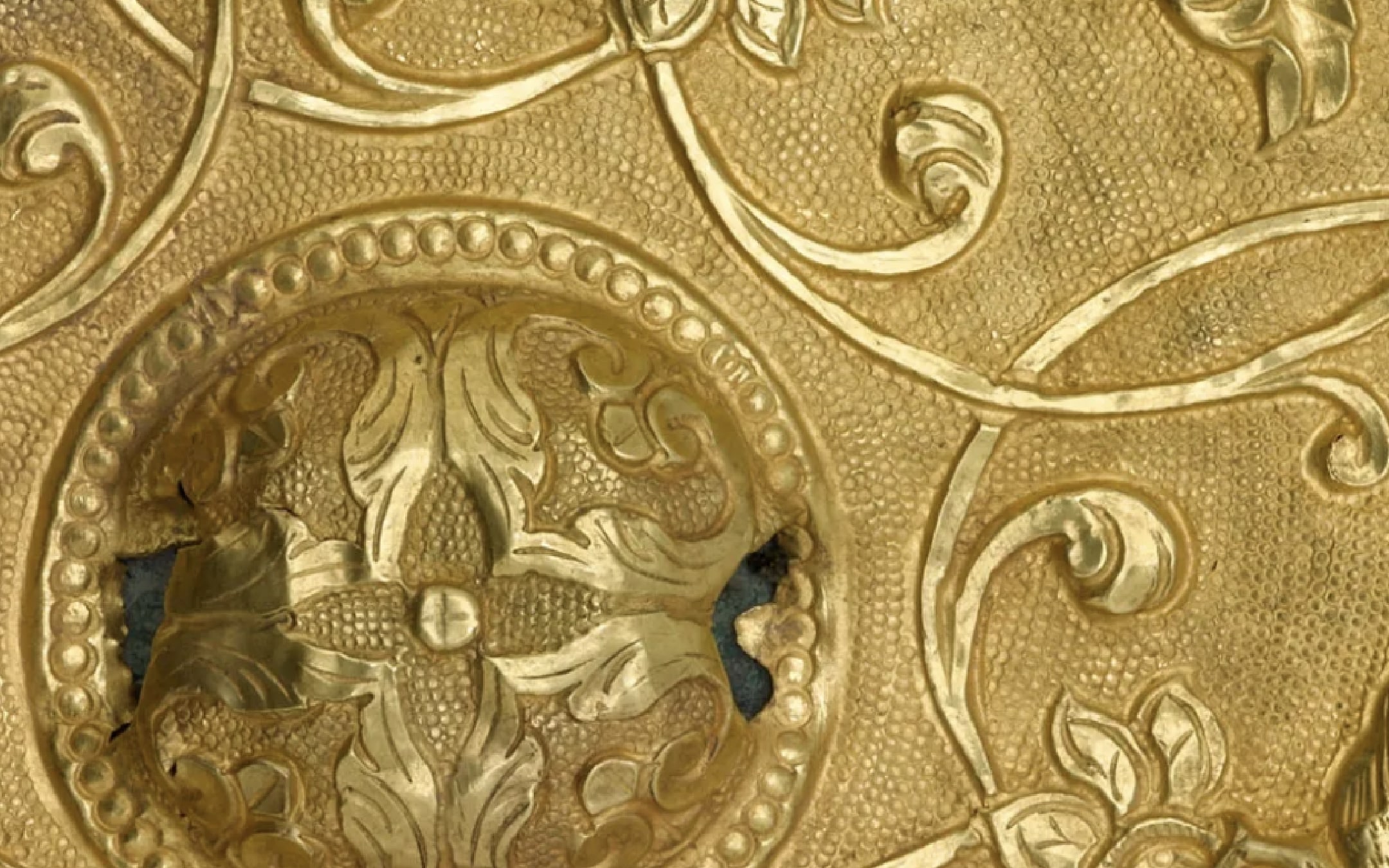Dish in the form of a plum blossom with figure watching water fowl

Terms of Use
Usage Conditions ApplyAt A Glance
-
Period
late 14th century -
Geography
China -
Material
Carved red lacquer on wood core -
Dimension
H x W x D: 2.5 x 16.8 x 17.1 cm (1 x 6 5/8 x 6 3/4 in) -
Accession Number
S1997.35 -
EDAN ID
edanmdm:fsg_S1997.35
Object Details
-
Label
Gardens provided a source for creative inspiration for Chinese poets, calligraphers, and painters, who were frequently portrayed in both natural and cultivated settings. On this finely carved lacquer dish, a seated figure is shown intently gazing at the moving waterfowl and the scenery beyond. While the composition appears to be a generic scene of quiet repose it may have been inspired by the story of the fourth-century calligrapher Wang Xizhi (circa 307-365), who claimed that he learned principles of brush movement by studying the natural mannerisms of swimming geese. The dish, an early example of pictorial lacquers, is also notable for its unusual shape of a five-petal plum blossom. It is framed with a floral border that includes plum, peony, hibiscus, chrysanthemum, and camellia. This type of imagery proved popular on early Ming lacquer dishes and boxes, which were, perhaps, given as imperial gifts to respected members of the scholarly civil service. -
Provenance
?-to 1972Sammy Yu Kuan Lee, President of Oriental House, Ltd., Tokyo, and Sammy Y. Lee & Wangs Company, Ltd., Hong Kong [1]1972-1987Dr. Arthur M. Sackler (1913-1987), New York, NY, purchased from Sammy Yu Kuan Lee, President of Oriental House, Ltd., Tokyo, and Sammy Y. Lee & Wangs Company, Ltd., Hong Kong [2]Unidentified owner, method of transfer unknown [3]1994-1996Estate of Dr. Arthur M. Sackler, New York, NY [4]1996-1997Arthur M. Sackler Foundation, New York, NY, transferred from the Estate of Dr. Arthur M. Sackler [5]From 1997Arthur M. Sackler Gallery, gift of the Arthur M. Sackler FoundationNotes:[1] See paper file from the Arthur M. Sackler Foundation, copy in object file.[2] See note 1.[3] The object was on loan to the Arthur M. Sackler Gallery between 1987 and 1997.[4] See note 1. See curatorial remark 1.[5] See note 1. -
Collection
Arthur M. Sackler Collection -
Exhibition History
East of Eden: Gardens in Asian Art (February 24 to May 13, 2007)The Arts of China (November 18, 1990 to September 7, 2014) -
Previous custodian or owner
Sammy Yu Kuan Lee 李汝寬Oriental House LTDSammy Y. Lee & Wangs Company, Ltd.Dr. Arthur M. Sackler (1913-1987)Arthur M. Sackler Foundation (founded 1965) -
Origin
China -
Credit Line
Gift of The Arthur M. Sackler Foundation -
Type
Vessel -
Restrictions and Rights
Usage Conditions Apply
There are restrictions for re-using this media. For more information, visit the Smithsonian's Terms of Use page.
The information presented on this website may be revised and updated at any time as ongoing research progresses or as otherwise warranted. Pending any such revisions and updates, information on this site may be incomplete or inaccurate or may contain typographical errors. Neither the Smithsonian nor its regents, officers, employees, or agents make any representations about the accuracy, reliability, completeness, or timeliness of the information on the site. Use this site and the information provided on it subject to your own judgment. The National Museum of Asian Art welcomes information that would augment or clarify the ownership history of objects in their collections.
Keep Exploring
-
Related Resources
-
Date
-
Name
-
Place
-
Topic
-
Culture
-
Object Type

